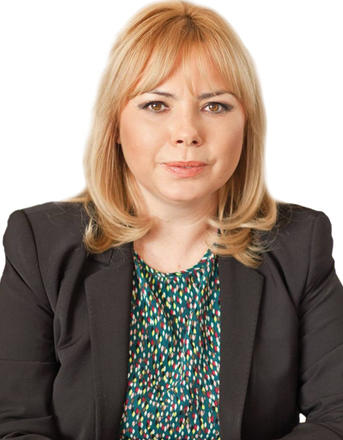Q: You took office in November 2015 and are in charge of Romania's public finances until elections in November this year. What have been your achievements so far, and what are the finance ministry’s targets before the elections?
A: We have very clear targets to improve the transparency of our fiscal policy in general, to increase the efficiency of using public resources, and of having a better approach to the taxpayers. So far so good.
In terms of transparency, we launched a database platform that includes the budgets of all public entities in the country. There are about 13,700 public entities: kindergartens, schools, city halls, ministries. Everybody can access this information online. This is a huge step for transparency and we anticipate that the trust of taxpayers will increase, which will improve the relationship between the state and the citizens.
In terms of efficiency we are working on a spending review for programmes in a couple of ministries and we hope to use this analysis as a basis for next year’s budget.
Q: The previous government introduced tax cuts and wage increases before it left office. What impact does this have on the budget and the economy?
A: For this year we have real gross domestic product [GDP] growth of 4.2%, and that is driven by net exports, investments and consumption – so by domestic demand. In September 2015, a new fiscal code was published, which included some relaxation measures and measures to close some loopholes in the previous fiscal code. It was also meant to provide a more level playing field for the economy.
We have had a significant reduction of value-added tax [VAT] from 24% to 20%, but this is still above the level before the crisis when VAT was at 19%. In the aftermath of the crisis, Romania took significant measures for fiscal consolidation, including increasing taxes such as VAT from 19% to 24% and cutting public wages and social assistance by 25%.
Now that the economy has recovered, we are in a position to relax the fiscal stance. We also have a wage increase in 2016, especially in the health sector and in education. I would call this a structural reform rather than a wage increase as we need to keep doctors in the country, because there is an exodus of young doctors to western Europe, and we need to continue with the good quality of our education system.
Based on these measures, we have some additional funds in the real economy of about 23bn lei [$5.68bn] and this money is channelled towards consumption and investment. We have been improving conditions for investment and we see some good signs, especially from private investment.
For this year we have a higher budget deficit because we have some lower revenues due to the tax cuts and higher spending in health and education. For infrastructure we have increased spending in nominal terms and we have adjusted it compared with the level of implemented investments at the end of 2015.
Q: Romania’s EU funds absorption rate is one of the lowest in the union. How are you trying to improve this and which areas should be targeted with the funds?
A: To boost public investments and EU fund investments, we have a new comprehensive strategy for public procurement. The old system was rigid and had some loopholes and was a bit heavy to implement. There were many challenges once a contract was awarded. The new legislation voted for in May provides a streamlining procedure for the entire process.
We are now focusing on the new fiscal strategy of 2014 to 2020, and we expect to see the results of the new public procurement legislation by the end of this year, and next year in the form of improved investment figures.
The structural funds are used to increase the potential of the economy, to help the convergence processes with the EU average in terms of standard of living. In the western part of Romania some communities are more developed, while in the eastern part we see higher unemployment and lower GDP per capita. It is important to use the funds to diminish such regional discrepancies and between urban and rural areas.
In 2018 Romania will celebrate 100 years since the creation of the unitarian modern state. For then we have the project to build a motorway linking the eastern part to the rest of the country, crossing the mountains from Moldova to Transylvania in the south.
Anca Dana Dragu is Romania's minister of public finance.












